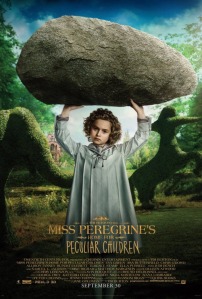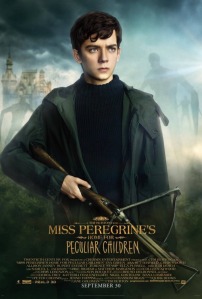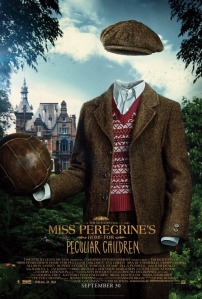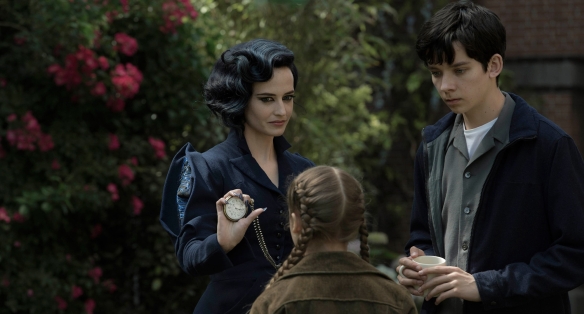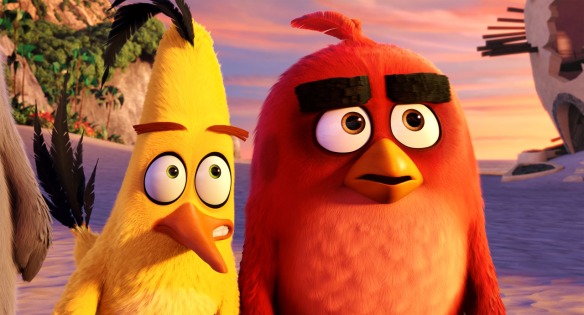 Beetlejuice wasn’t Tim Burton’s first big-screen directorial effort. That would be Pee-Wee’s Big Adventure three years prior. But it was the first that could be legitimately called “A Tim Burton movie” and bear what would come to be recognized as the director’s signature style of gothic looks and dark humor.
Beetlejuice wasn’t Tim Burton’s first big-screen directorial effort. That would be Pee-Wee’s Big Adventure three years prior. But it was the first that could be legitimately called “A Tim Burton movie” and bear what would come to be recognized as the director’s signature style of gothic looks and dark humor.
The story, as everyone knows, involves the Maitlands (Alec Baldwin and Geena Davis), a couple that moves into a house in the country and promptly dies in a car crash. They are stuck in their house as ghosts, which isn’t great when a new high-fashion Yuppie couple (Jeffrey Jones and Catherine O’Hara) with their daughter Lydia (Winona Ryder), who’s an anti-social young woman who just wants to take photographs and be left alone. To get the Deetzs out of their house, the Maitlands enlist the help of a big-personality spook named Beetlejuice (Michael Keaton), but that deal turns out to have unintended consequences.
In 1988 Burton’s name and reputation wasn’t what it would become just year later with the release of Batman. But it did have Keaton, who was an established and well-liked comedic actor at the time, and a cast full of solid other players that most people would recognize. So the marketing had a few hooks to hang on but nothing huge. This wasn’t based on a book or other established property, so the marketing worked with what it had.
The poster is selling the movie as an outrageous comedy. Davis and Baldwin as the Maitlands are standing above the house where most all of the movie’s action takes place, with Keaton as the title character standing between them. They loom large, while the rest of the characters are standing on the sidewalk, in scale with the house, looking up at the monstrous happenings going on in front of them. All kinds of spooks and specters are coming out of the house’s doors and windows and peaking around the side.
Keaton’s name is the only one above the title, showing his stature in the industry at the time. Two taglines are featured. The one at the top is kind of clunky, saying “In this house…If you’ve seen one ghost…you haven’t seen them all.” The one below the title treatment tags the Beetlejuice (both the character and the movie) as “The name in laughter from the hereafter.” So you can see the one-sheet designers are trying to play up the unique look of the movie, largely drawn from Burton’s imagination, as well as promising the audience a rollicking good time with an actor – Keaton – that they already find hilarious.
The theatrical trailer takes a similar approach, though it obviously has more to work with. It starts out by tagging it as coming from the director of Pee Wee’s Big Adventure, so there must have been some cache attached to Burton’s work at that point. From there it gets almost immediately into the mayhem caused by Beetlejuice’s presence, with much of the footage coming from the chaos he brings with him, either during his initial interactions with the Maitlands or during the finale as he’s wreaking vengeance on everyone in the house.
What comes across pretty clearly here is the director’s style and the look and feel of the movie. Everything is dark gray and purple and outrageously cartoonish with the skeletons working data entry and the elongated faces the Maitlands put on to try and scare the Deetzs. The voiceover gives the audience only a brief synopsis of the story at the beginning, helping to explain that Adam and Barbara are ghosts who are unhappy about a new family moving in and that Beetlejuice is the solution they seek to their problem. But things quickly devolve as he goes rogue and out of control.
That’s a surprising amount of the story that’s on display. No, it’s not everything, but it’s quite a bit and offers the audience at least a solid expectation as to the story they’re being asked to sign up for. That’s pretty true of the campaign as a whole, which sells Keaton as the main draw but then puts Burton’s visuals in the context of his actions, helping to make all that reasonable for the audience. Essentially it used the existing love of Keaton’s comedy as the easy entry point for what would be the wide, imaginative world of Tim Burton, selling the audience a lighthearted paranormal romp that had what at the time was a fairly dark edge.


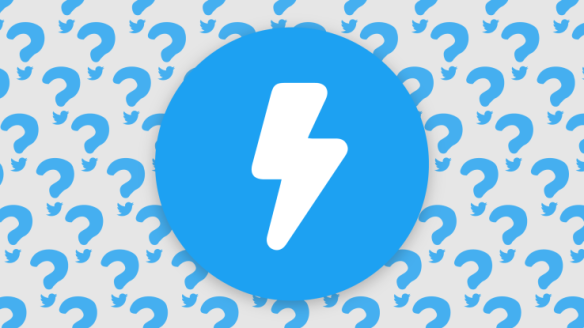
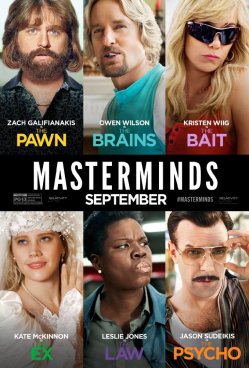 David Ghant (Zach Galifianakis) is pretty content with his life as a security guard for an armored car company. It’s not thrilling, but it works for him. That is, it works for him until Kelly (Kristen Wiig), a coworker he has a crush on and has been flirting with, proposes to him that they steal some of the money they transport on a daily basis. So they put into motion a plan that results, against all odds, in them successfully making off with about $17 million and that’s the plot of the new movie
David Ghant (Zach Galifianakis) is pretty content with his life as a security guard for an armored car company. It’s not thrilling, but it works for him. That is, it works for him until Kelly (Kristen Wiig), a coworker he has a crush on and has been flirting with, proposes to him that they steal some of the money they transport on a daily basis. So they put into motion a plan that results, against all odds, in them successfully making off with about $17 million and that’s the plot of the new movie 


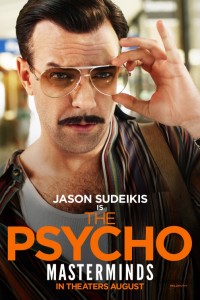
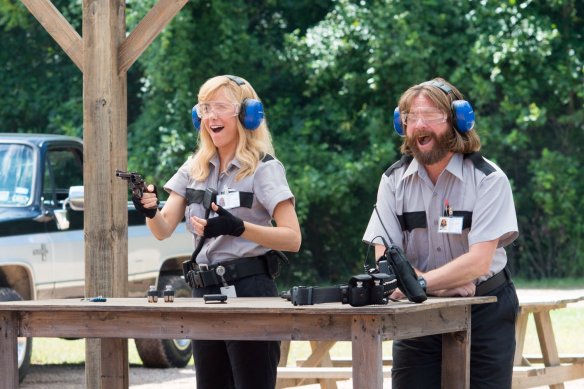

 Jacob is just discovering he’s not like other teenagers, notably that he has unusual powers and abilities. As he uncovers more and more about his past and his skills he comes to find Miss Peregrine’s Home for Peculiar Children, a special refuge and home for people like him. He comes to find out there are many more like him and that his role is particularly unique in that society. That’s going to be especially important as not only does society as a whole fear them but there are dark forces who have much more malevolent intentions toward them.
Jacob is just discovering he’s not like other teenagers, notably that he has unusual powers and abilities. As he uncovers more and more about his past and his skills he comes to find Miss Peregrine’s Home for Peculiar Children, a special refuge and home for people like him. He comes to find out there are many more like him and that his role is particularly unique in that society. That’s going to be especially important as not only does society as a whole fear them but there are dark forces who have much more malevolent intentions toward them. 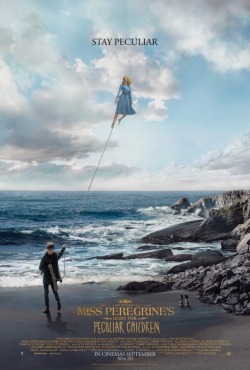 The first poster introduced us to the peculiar cast of characters. So all the children are arrayed behind Miss Peregrine herself with the house they live in in the background. We can see what each kid’s gift is as one girl is floating while another holds fire in her hands and another lifts a boulder over her head and so on. At the top of the poster are some of Burton’s previous credits, which lean heavily on other movies about either odd characters or just recent popular entries in his filmography. It’s very colorful and whimsical and even without Burton’s name there you’d likely be able to peg it as coming from him.
The first poster introduced us to the peculiar cast of characters. So all the children are arrayed behind Miss Peregrine herself with the house they live in in the background. We can see what each kid’s gift is as one girl is floating while another holds fire in her hands and another lifts a boulder over her head and so on. At the top of the poster are some of Burton’s previous credits, which lean heavily on other movies about either odd characters or just recent popular entries in his filmography. It’s very colorful and whimsical and even without Burton’s name there you’d likely be able to peg it as coming from him.
